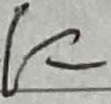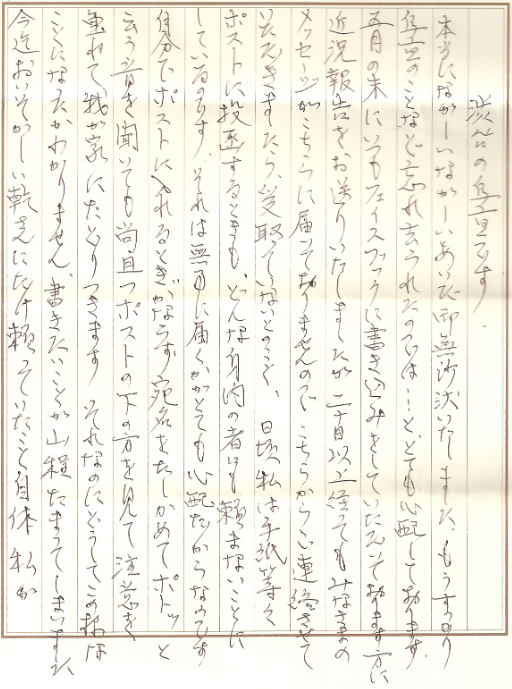掲示板 Forums - Is kana stroke order that important?
Top > 日本語を勉強しましょう / Let's study Japanese! > Anything About Japanese Getting the posts
Top > 日本語を勉強しましょう / Let's study Japanese! > Anything About Japanese
Not a question about kanji, just hiragana and katakana. I think I write a handful of them "wrong" but I also write 'd'-s backwards, so? If it matters, I'd say my handwriting for hiragana is good and it's getting there for katakana. Not asking out of laziness, I figure it's better to reroute my muscle memory sooner rather than later.
よろしくお願いします!!

Kana stroke order matters for the same reasons kanji stroke order does. When writing by hand, characters tend to be more rounded with strokes bleeding into one another. But despite the sloppier appearance, the correct stroke order gives them an unmistakable shape that makes them identifiable.
For example, take a look at:

It starts with a downward stroke on the left, which then connects to another on the top right (going left-to-right), followed by a separate one on the bottom. It's clearly に. If it was written differently (e.g. the right side before the left or the strokes going right-to-left), it would have a completely different "look".
That also applies when you're the one writing (whether by hand, or using some sort of touch device for input). It will be much harder (for other people or the software) to recognize characters written with an incorrect order.
Here are some more handwritten letters to see it in action:


I'll add that even computer/book fonts are designed with stroke order in mind, so whether or not you think you'll encounter a lot of handwritten Japanese in your studies, strongly internalizing stroke order will only help you in recognizing a variey of fonts and differentiating similar characters like シ and ツ.
Unlike with Latin letters, where the "stroke order" is pretty free as long as the character is the right shape, Chinese characters (and therefore Japanese characters based on them, including kana) were historically written by brush in a variety of calligraphic forms, so they are not just heavily but often PRIMARILY recognized not by their overall shape but by a sense of how the "brush" was moving while writing it (even in more modern writing when there is no brush involved).
Stroke order rules aren't there to restrict you or enforce arbitrary standards of good handwriting, they're there as an active aid to both read and write.
Thank you both very much for your detailed answers!
I think I vaguely knew of this principle as it relates to kanji but for some reason it wasn't clear to me how it applies to kana.
I have kanji practice days already but I guess I should have ones for kana too.
Thank you!